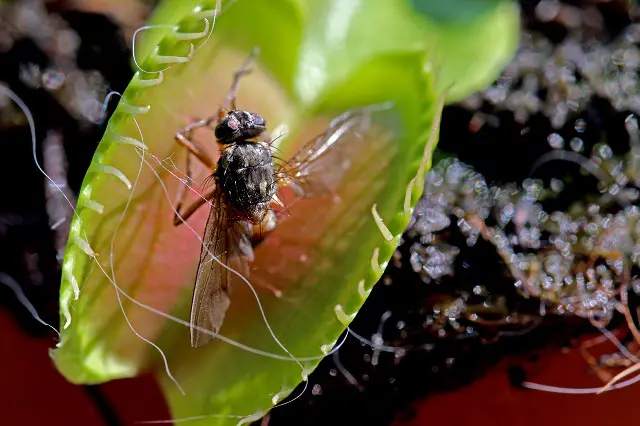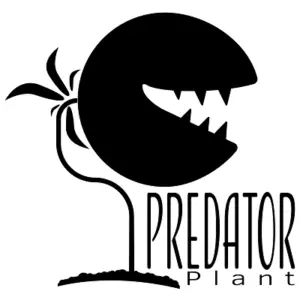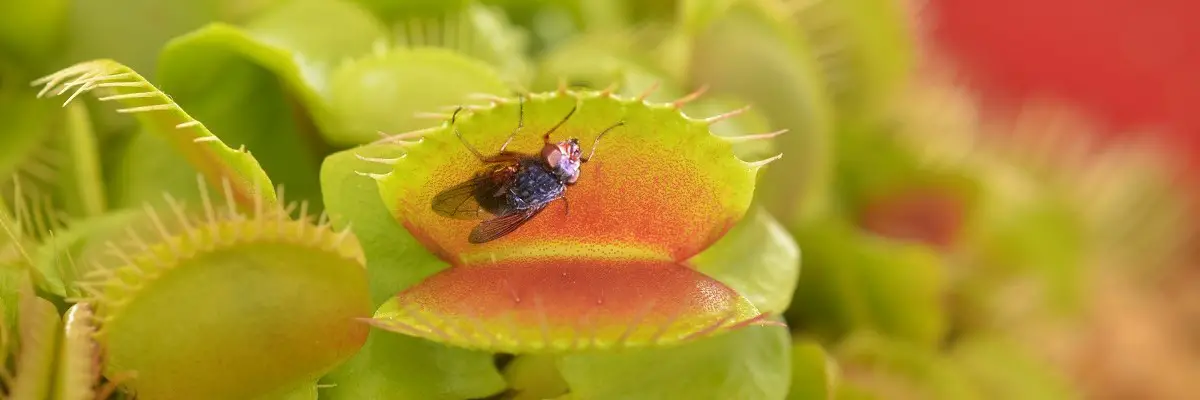The Venus flytrap is a unique, delicate, and interesting houseplant, the most known carnivorous plant. As opposed to other plants, Carnivorous plants rely on small, live creatures to supply supplemental nutrition, such as flies, bugs, spiders, wasps, etc.
Venus flytraps (Dionaea muscipula) prefer insects and spiders as food sources. You should never feed Venus flytraps human food. A better alternative is to feed them small live bugs with high nutritional value. You can also feed them freeze-dried insects.
Venus flytraps do not require insects to survive. By eating prey, however, they receive extra nutrients, which in turn enable them to grow and multiply.
Venus flytrap leaves have half-moon shapes and are covered with cilia, which resemble eyelashes. Upon opening, the reddish inner surfaces of these leaves reveal sweet nectar that attracts insects. The trigger hairs cause the leaves to snap shut, trapping the prey and interlocking the cilia.
Foods That Venus Flytraps Can Eat
As you may notice from the following list, Venus flytraps are able to feed on a wide variety of insects. Learn the best and most practical alternatives for your situation by reading below.
| Flies | Fruit flies |
| Bloodworms | Gnats |
| Cricket | Mealworms |
| Spiders | Ants |
| Grasshoppers | Ladybugs |
| Mosquitos |
Venus flytraps consume flies in the wild. Flies are attracted to Venus flytraps by their nectar and are trapped by their leaves. As a result, they release enzymes that drown the flies and consume them. The Venus flytrap also consumes many different insects and spiders besides flies.
Venus flytraps and most carnivorous plants eat crickets, mealworms, and bloodworms. Their high protein content and soft tissues make them particularly appealing to Venus Flytraps. You can purchase all three from pet stores or online. In general, two options are available: live bugs and freeze-dried bugs.
Venus flytraps can be fed dead bugs. It is a little more challenging to use dead feed over live bugs. You can find dead bugs around your home and garden as well as buy them at pet stores; some common options are crickets, mealworms, bloodworms, and fruit flies.
Venus flytraps can eat live or dead bugs. Both types of food are nutrient-dense. Utilizing dead insects, however, is less natural. The feeding process requires an extra step if you want the plant to consume a dead bug. In the example above, water will be necessary for rehydrating the insect.
What Not To Feed Your Venus Flytrap
Venus flytraps and other carnivorous plants should not consume human food. These complex foods won’t be digestible by Venus flytraps. Rather, the leaf withers when it cannot digest its food, causing the food to rot and attracting mold and bacteria.
The Internet is filled with misinformation about what to feed Venus flytraps. There are a few things you should never feed a Venus flytrap:
| Raw meat | Chicken |
| Sausage | Salami |
| Fruit | Cheese |
Despite being carnivorous, Venus flytraps shouldn’t be fed animal meat. Their digestion is not well adapted to the plant and can cause leaf rot. You can also introduce harmful bacteria into the plant’s system by placing the meat in its traps. As a general rule, let your plants eat only what they could naturally catch. Venus flytraps cannot digest small mammals, unlike some other carnivorous plants.
Venus Flytrap Feeding Basics
| Feed one trap at a time: |
|---|
| One bug is all you need. The feedings can be alternated, but more than one trap should never be fed simultaneously. Choose one trap and feed it only. |
| Do Not Overfeed |
|---|
| It is not advisable to overfeed Venus flytraps: If the plant gets overwhelmed by the amount of food, it will lose leaves. Venus flytraps should only be fed once every two to six weeks. Before introducing a new meal, wait for the plant to digest the previous one for at least two weeks. |
| Inspect the leaves after feeding |
|---|
| Observe the flytrap for a week after feeding it. Your plant should digest the bug within a week if the leaf starts dying, midway through the digestion process, if the insect is too large for it to handle. |
| Do Not Feed Dormant Flytraps |
|---|
| Dormancy is similar to hibernation in the Venus flytrap during the winter. They don’t require any food during this time. |
If you grow Venus flytraps in a closed terrarium, the easiest way to feed the plants is to release small flies into the space. In time, the traps will attract the bugs and consume them. Despite their carnivorous nature, flytraps can survive for long periods without eating insects. The plants will get enough to eat naturally if you grow them outside. Venus flytraps need to be fed bugs periodically if they are grown indoors. Feed your flytrap only insects that are smaller than one-third the size of the trap; try to avoid live flies and small spiders, beetles, and caterpillars.

Feeding Dead or Freeze-Dried Insects To Your Venus Flytrap
We assume you’ve chosen either dehydrated or dead food for your Venus flytrap. You need to trick the plant into chemical and physical reactions (both physical and chemical) to encourage it to eat.
To do this, choose an insect that is about 1/3 the size of the trap that is either freshly dead or freeze-dried. Sizing plays an important role in this process. Bacteria can enter the trap and poison it whenever the trap’s seal is not completely closed.
Place the insect in the trap’s center after it has been secured with tweezers. By moving a toothpick, you can simulate its food moving the hairs. The trigger hair-like leaves will react when you touch two of them. The “hairs” need to be stimulated once more after a partial closure.
To promote a full closure, the toothpick or tweezers must be inserted into the trap again and wiggled for about 30 seconds. It is also possible to trigger the “hairs” by gently pressing together they trap leaves. Success has been attributed to both techniques.

